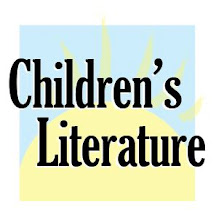Back to school often brings a lot of new: new teachers, new classmates, new buildings, new neighborhoods, even things like new supplies and clothes. Transitions are challenging for most of us and this can be a big one, especially that first week or two of school. Eating healthy and getting plenty of sleep are always important but as summer draws to a close getting into a school schedule is a main focus point for parents. Allowing time to read aloud about the new school year is one way to help ease this transition.
In addition to the new titles below, there are many favorites that work for reading to your family or students as they head back to school. Did they see the new Ramona and Beezus movie this summer? Ramona starts kindergarten in Beverly Cleary’s Ramona the Pest. Other popular characters who experience starting school include: Ella (Ella the Elegant Elephant); the Berenstain Bears; Arthur; Little Critter; Lola (Charlie and Lola); Wemberly (Wemberly Worried); and many more. Browse through this feature and those from previous years to discover more.
For back to school resources visit:
http://www.usa.gov/Topics/Back_to_School.shtml
http://www2.scholastic.com/browse/article.jsp?id=10623
Browse through these titles and those from previous years for some selections to share with your family or students.
http://www.childrenslit.com/childrenslit/th_backtoschool.html
Pirate’s Guide to First Grade
James Preller
Illustrated by Greg Ruth
The language made me immediately think of Long John Silver and the font chose for certain words also has a look of the past. There are multiple stories—the text, the reality in the artwork and the fanciful imaginary world in the sepia illustrations that accompany the more realist ones. These shadowy illustrations feature the pirates. It is the first day of school and time to get ready—our young protagonist shines his snappers and after dressing mashes his chompers on grub. “Ahoy, me harties!” he cries as he boards the school bus. Wouldn’t you know his teacher’s name is Silver and is referred to as Captain Silver. The usual rituals are all couched in nautical terms including story time, after which our young lad exclaims “Blimy, it was a whale of a tale!” It ends with a trip to the library where his treasure is reading a copy of Treasure Island. The closing endpapers define the pirate terminology found in the text. If pirates are your thing great, if you are heading off for a first day at school this may be a good choice to alleviate those first day jitters. 2010, Feiwel and Friends/Macmillan, Ages 5 to 7, $16.99. Reviewer: Marilyn Courtot (Children's Literature).ISBN: 978-0-312-36928-6








